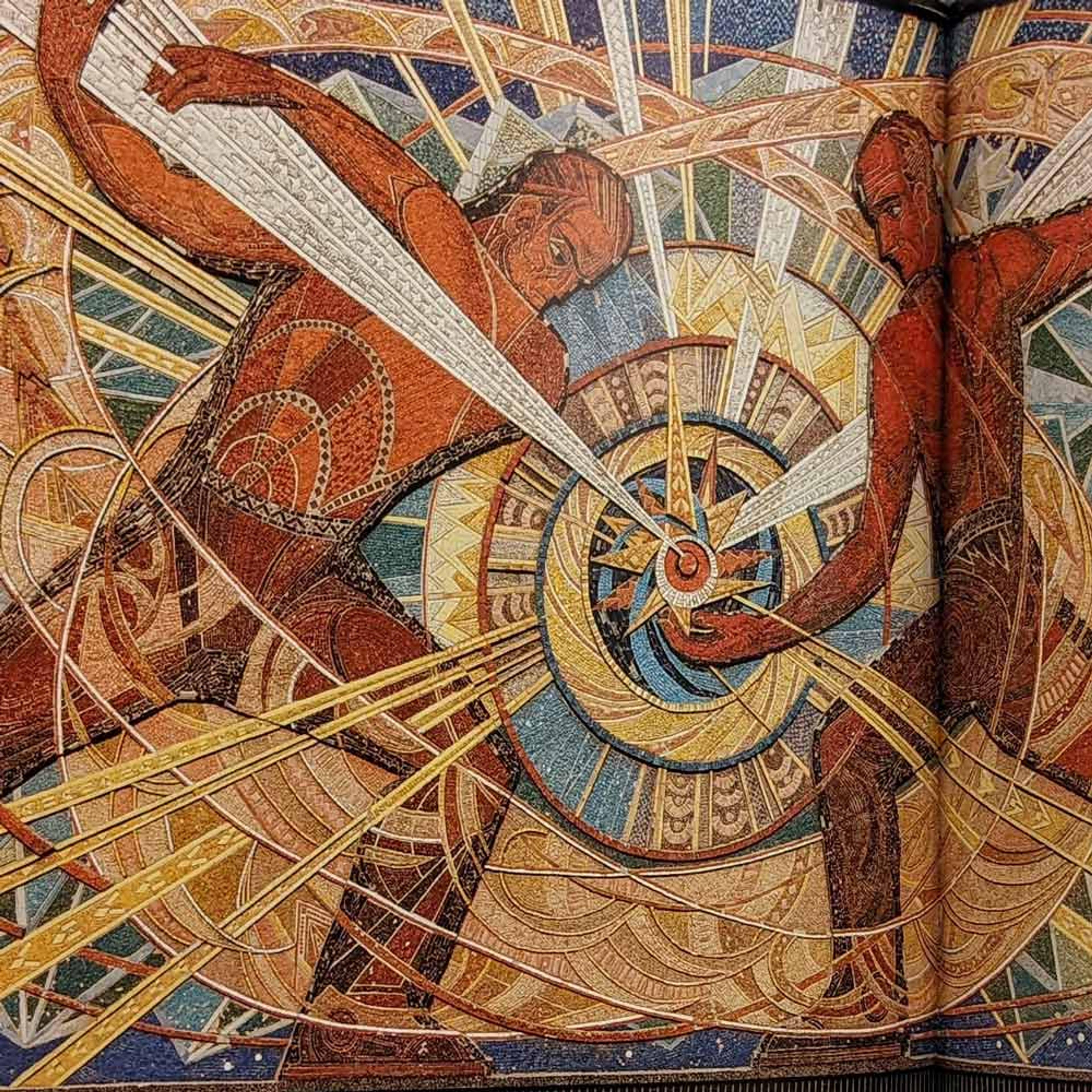With Ukraine so present in our thoughts right now, I’d like to offer a moment of reflection by sharing some books from Watson Library’s collection that honor Ukraine’s rich cultural heritage. The Metropolitan Museum of Art libraries have nearly eight hundred books that were published in Ukraine, with holdings in eight departmental libraries in addition to those held by Watson.
For this post I’ve selected books that capture a sense of place. This includes books that focus on public artworks, such as monuments, murals, and architecture—works that contribute to the character of a city and would be seen by the people of Ukraine as they go about their lives—as well as documentary photography books that offer a glimpse of life in Ukraine.
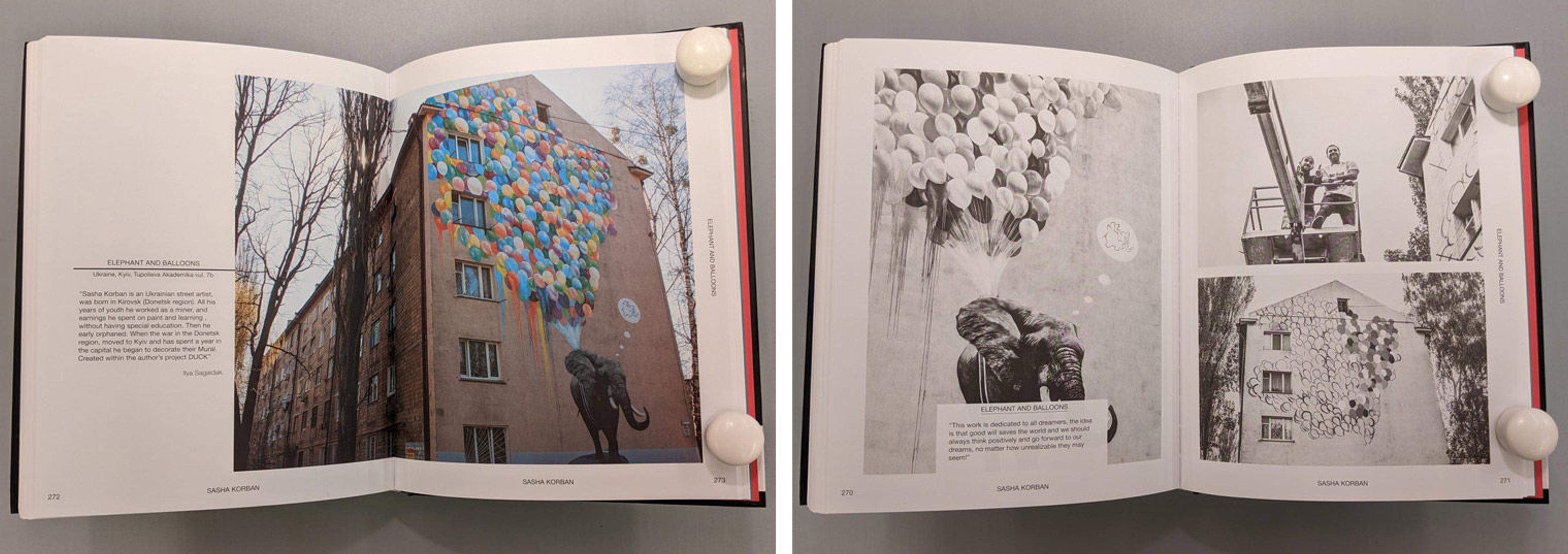
"Elephant and Balloons" by Sasha Korban from Geo Leros, Kyïv Street Art 2010–2017: Al’bom(Lviv: Vydavnyt︠s︡tvo Staroho Leva, 2017)
Kyïv Street Art 2010–2017: Al’bom is a love letter to the modern murals of Kyiv, many of which were created through recent art development projects such as Art United Us. Showcasing seventy murals throughout the city and the artists who created them, Geo Leros reflects on the power of art to transform the world around it: “Not always a place creates a piece of work, but a piece of work also creates a place.”
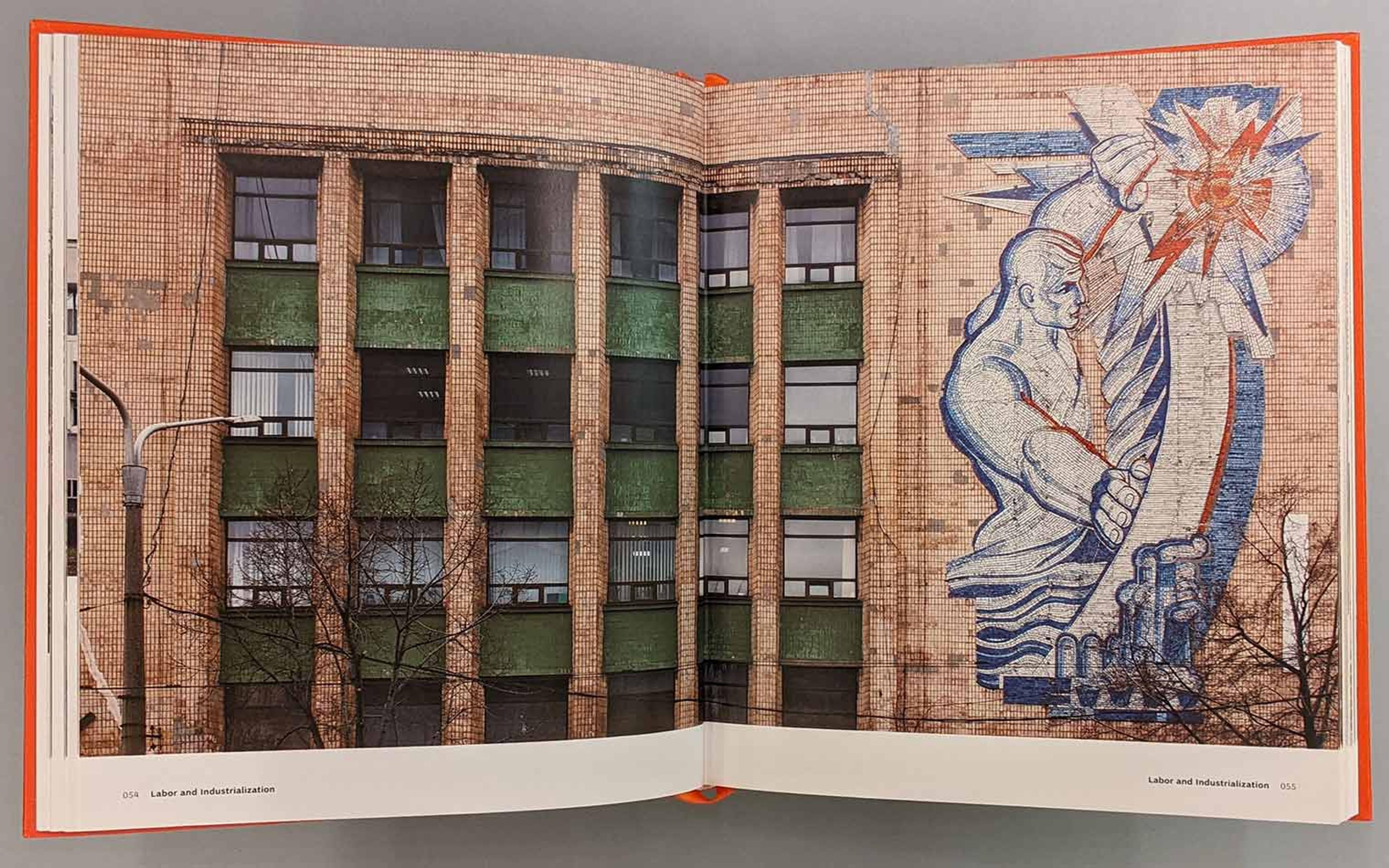
Yevgen Nikiforov, Decommunized, Ukrainian Soviet Mosaics (Berlin: DOM Publishers, 2017)
Decommunized, Ukrainian Soviet Mosaics and Art for Architecture Ukraine: Soviet Modernist Mosaics from 1960 to 1990 are two surveys of Soviet mosaics created from the late 1950s through the 1980s that explore Ukraine’s complex relationship with its Soviet past. In 2015 the country passed a controversial law, “On the Condemnation of Communist and National Socialist (Nazi) Regimes and Prohibition on Propaganda of their Symbols,” outlawing the Soviet slogans and symbols that are found in many mosaics on public buildings throughout the country. Numerous mosaics have been destroyed either as part of the decommunization process or during routine renovations in which they simply weren’t seen as valuable.
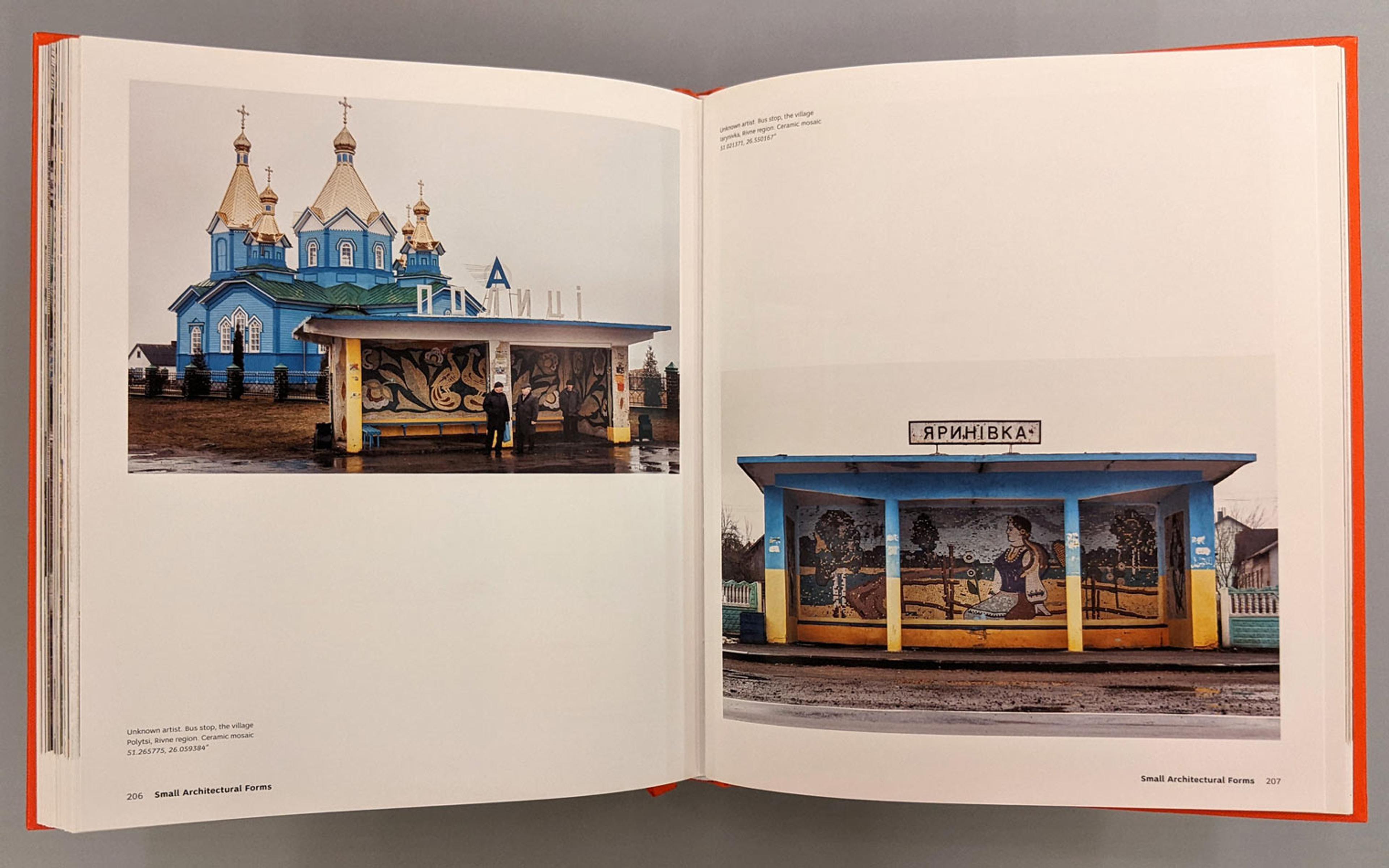
Yevgen Nikiforov, Decommunized, Ukrainian Soviet Mosaics (Berlin: DOM Publishers, 2017)
For Decommunized, Ukrainian Soviet Mosaics, photographer Yevgen Nikiforov traveled around the country attempting to document Soviet mosaics before they were destroyed, arguing that “we shouldn’t cultivate ignorance and pretend the Soviet period never existed. History brooks no blank pages: they only breed new myths. Preserved testimony of an era leaves more of a mark on society than deliberate erasure.”
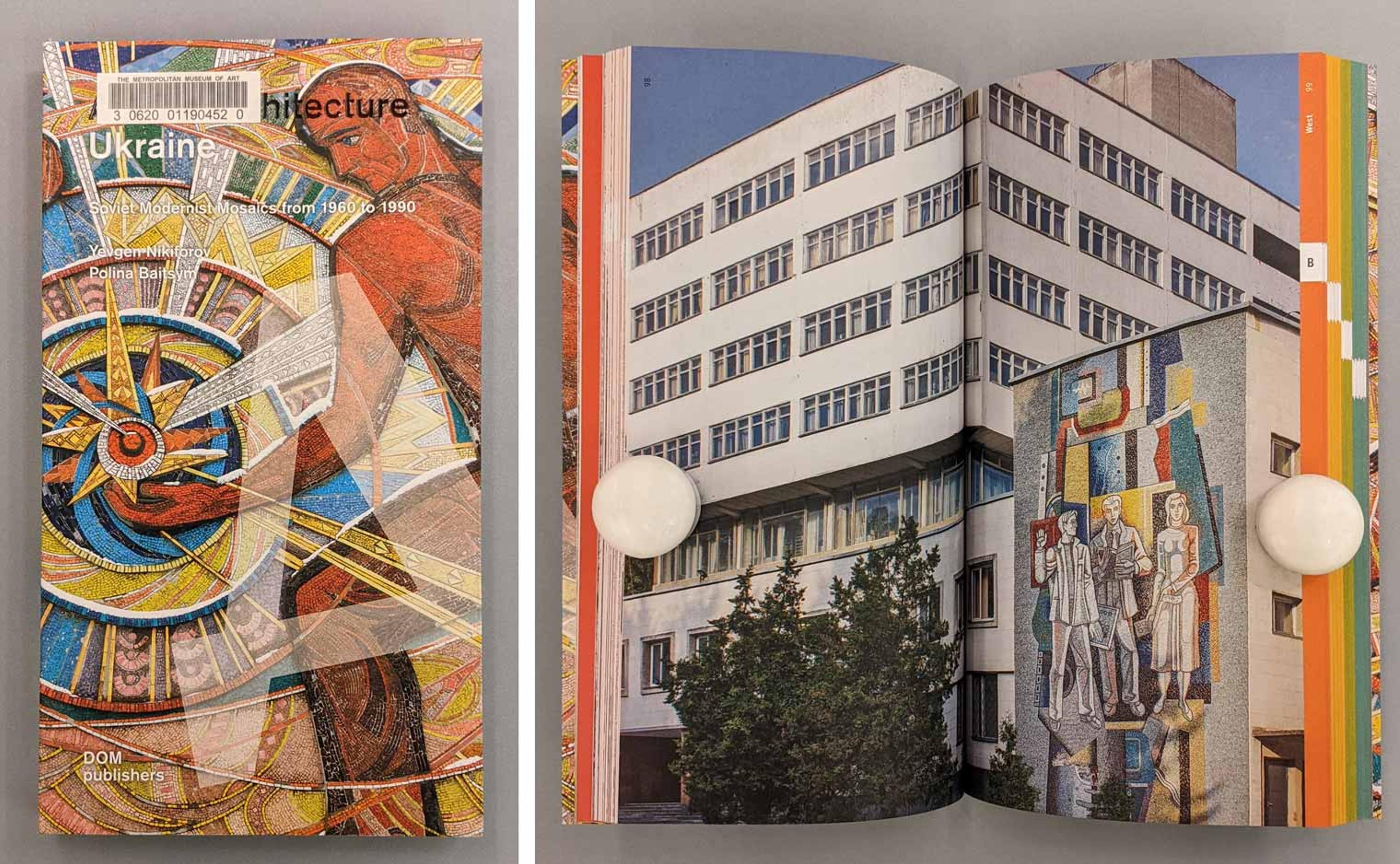
Yevgen Nikiforov and Polina Baitsym, Art for Architecture Ukraine: Soviet Modernist Mosaics from 1960 to 1990(Berlin: DOM Publishers, 2020)
Art for Architecture Ukraine: Soviet Modernist Mosaics from 1960 to 1990 builds on Nikiforov’s work in Decommunized with broader historical context provided by art historian Polina Baitsym.

Програма міжнародьного конкурсу на проєкт памятника Т. Шевченкові у м. Харкові(Kharkiv: Kharkivsʹkyĭ okru︠z︡hnyĭ vykonavchyĭ komitet, Misʹka rada, Komitet spry︠i︡ann︠i︡a budivnytstvu, 1930)
Програма міжнародьного конкурсу на проєкт памятника Т. Шевченкові у м. Харкові (Program of the International Competition for the Best Monument to T. Shevchenko in Kharkov) is the printed program for a 1930 competition for a public monument honoring Taras Shevchenko, the Ukrainian writer, artist, and political figure who championed Ukrainian independence and is widely regarded as the founder of modern Ukrainian literature. The finished monument was unveiled in the city center in 1935 and is now considered one of the Seven Wonders of Kharkiv. The program features striking Futurist design and has text in Ukrainian, Russian, German, and French.

Left: Grigori Logvine, Sainte-Sophie de Kiev: Monument Public Historique (Kiev: Editions Mistetstvo, 1971). Right: Мозаики и фрески Софии Киевской (Kyiv: Myst︠e︡tstvo, 1975)
Sainte-Sophie de Kiev: Monument Public Historique and Мозаики и фрески Софии Киевской (Mosaics and Frescoes of Saint Sophia Cathedral in Kyiv) are among numerous books dedicated to the Saint Sophia Cathedral in Kyiv. Constructed in eleventh-century Kyivan Rus’ to rival Hagia Sophia in Istanbul, the monumental cathedral is now a UNESCO World Heritage site and one of the city’s most recognizable landmarks. It narrowly avoided destruction during the Soviet anti-religious campaign, at which point it was confiscated from the Orthodox Church (unlike the nearby St. Michael’s Golden-Domed Monastery, which was demolished in the 1930s and rebuilt following Ukrainian independence in 1991). Saint Sophia is currently a museum.
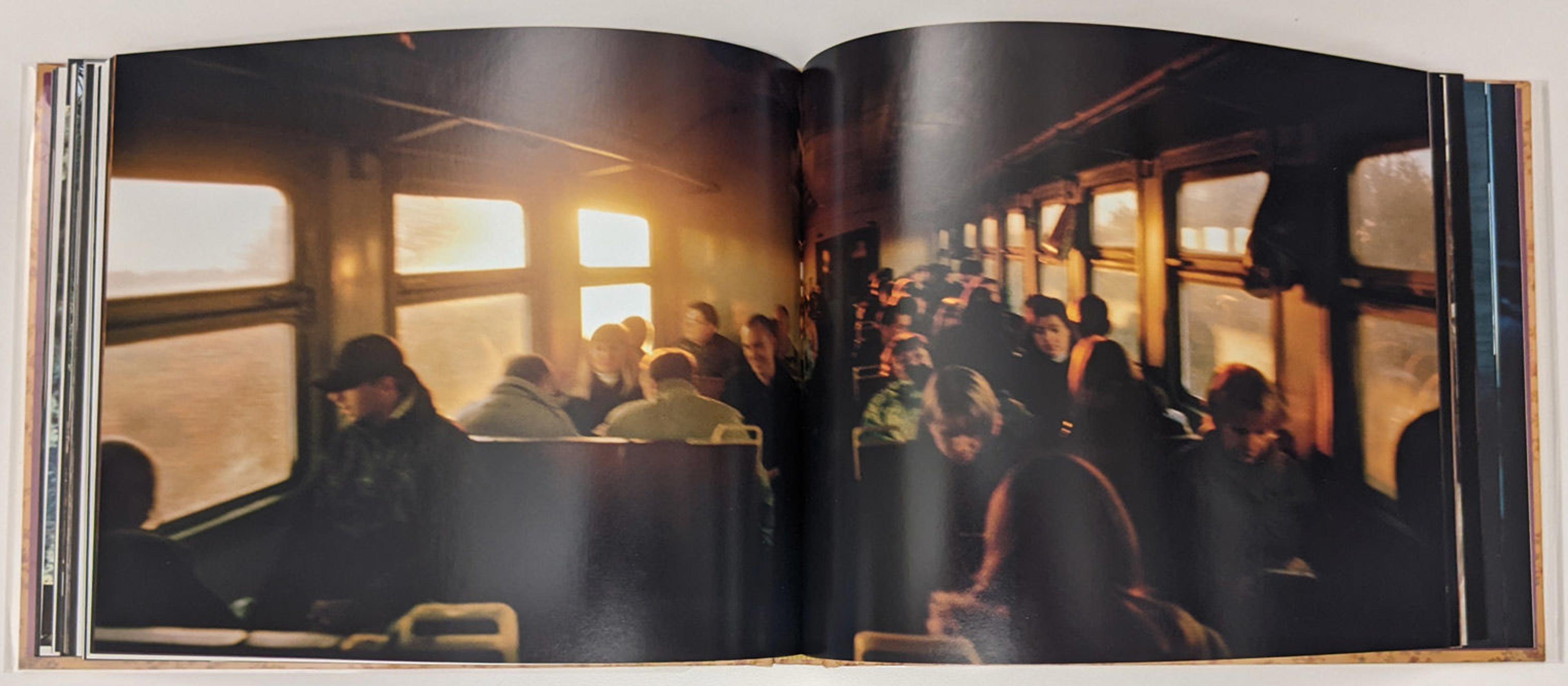
Kazuma Obara, Exposure(Barcelona: RM Verlag, 2018)
Photojournalist Kazuma Obara explores the ongoing legacy of the nuclear accident at the Chernobyl Nuclear Power Plant in Exposure. One volume documents the commute of Chernobyl’s workers, the repetition serving as a metaphor for the ongoing and seemingly endless process of decontamination. Obara states, “The daily life that we take for granted in the rest of the world is only possible thanks to the efforts of these plant workers. This is what I wanted to record as a photographer and it pulled me to Ukraine over and over again.”
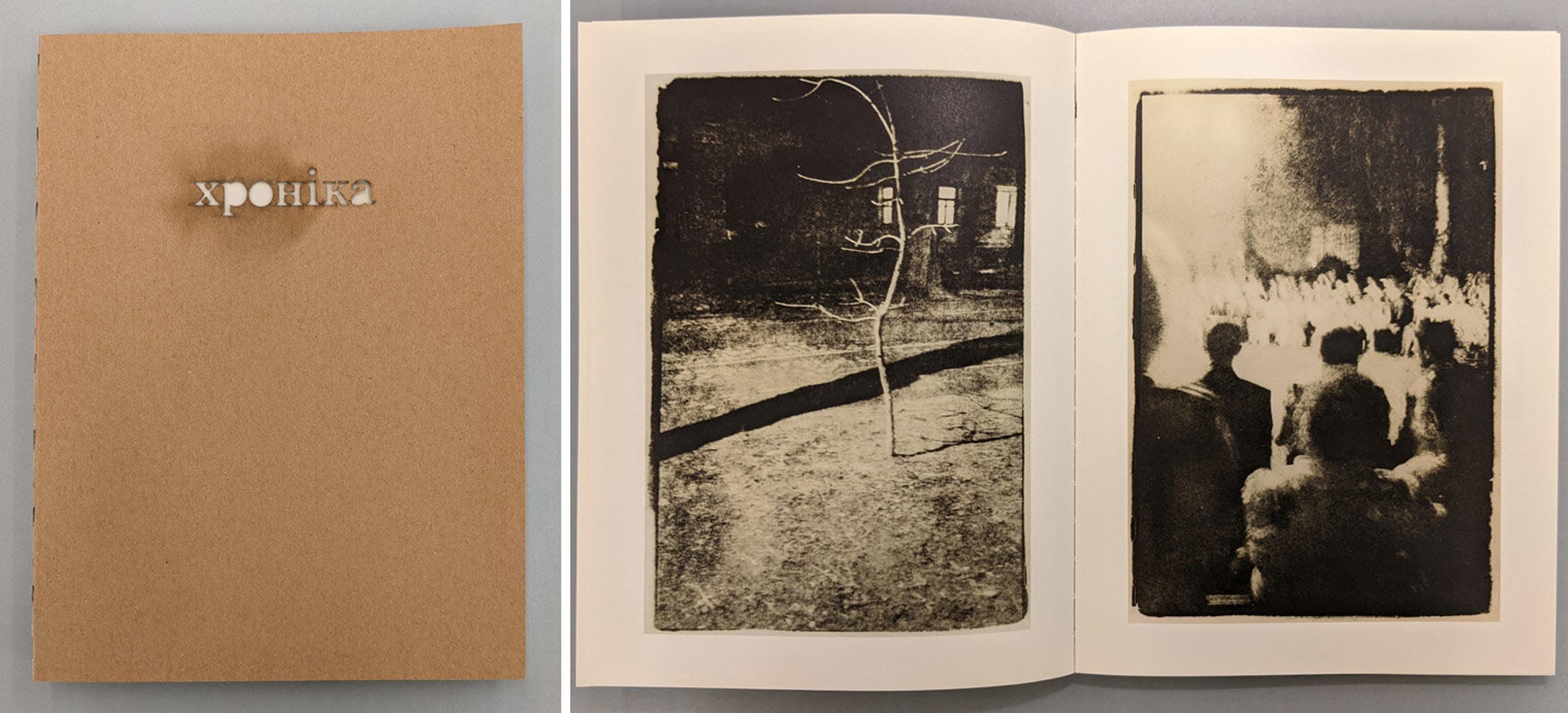
Sergiy Lebedynskyy and Vladyslav Krasnoshchok, Хроніка (Leipzig?: Dienacht Publishing, 2015)
Хроніка (Chronicle) contains photographs taken between 2010 and 2015 by Sergiy Lebedynskyy and Vladyslav Krasnoshchok, two members of the Shilo group, which formed in 2010 and is active today. Arranged chronologically, the photographs pivot abruptly from records of quotidian life to images from the Euromaiden uprising. According to Lebedynskyy, “The chapters of the book equally are a reaction to changes in our lives as well as their documentation. Front-line Kharkiv, revolutionary Kiev, Donetsk and Lugansk regions, shown in Chronicle, are the scenes of actions that will determine the future of Ukraine and, of course, the whole of Europe.”
To explore more Ukrainian materials in Watson Library, please see Dan Lipcan’s post on Ukrainian Easter eggs, Pysanky: Dyeing to Celebrate Easter, and Holly Phillips’s post Jeweled Elegance, which features two volumes on Kievan Rus’ jewels.
